It’s been 20 years since the laughter finally faded away; two decades since we heard the last hollow snigger at the mere mention of a Skoda.
For so long the butt of ill-informed jokes, the Czech brand finally completed its rehabilitation with buyers and driving enthusiasts alike in 2001 when it unleashed its first vRS model. Priced-to-sell value and practicality were always key staples of the appeal of the firm’s cars, but with these tuned and tweaked additions, you now had previously unimaginable levels of performance and poise added into the mix. And nowhere have vRS models been more successful than in the UK, where buyers have taken to them with open arms and wallets.
In recent years, one in five Skodas sold have worn this three-lettered performance badge of honour. So it’s only right that we celebrate such a significant milestone by bringing together one of the latest cars with a couple of its trailblazing forebears.
Before we get to those, though, a quick history lesson, starting with the name. We in the UK know these souped-up Skodas by their vRS (that’s Victory Rally Sport) monikers but everywhere else they’re badged simply RS. Why? Well, in the UK, Ford took exception to Skoda using the same hallowed initials as its own motorsport-themed hotshoes (although Ford preferred its Sport to be prefixed with Rallye rather than Rally), so to avoid seeing the inside of a courtroom, the Czechs gave its rival the ‘v’.
Although the first road-going vRS model appeared at the turn of the century, the badge’s lineage can be traced back much further. In 1974, the brand revealed the 180 RS and 200 RS, which were developed for racing and rallying. They were essentially hand-built, lightweight-bodied prototypes and just three examples in total were produced. Both were powered by the same four-cylinder engine, in either 1.8-litre or 2.0-litre capacity. The larger unit delivered 163bhp, which was enough muscle for Skoda to seek out a Porsche 915 five-speed gearbox to replace the fragile Tatra original.
It wasn’t until the 130 RS, which followed a year later, that Skoda really committed to making a high-performance car, albeit in small numbers and exclusively for motorsport. Using the same 110 R as a base, this homologation special featured a smaller, 138bhp 1.3-litre engine and proved to be a highly effective special stage star, sowing the seeds for over three decades of World Rally Championship class-winning success that continues to this day with the Fabia R5. Yet despite this rich vein of motorsport brilliance, there was no halo model to bolster the road car range, largely because finances behind the Iron Curtain meant that budget transportation rather than highoctane entertainment was the order of the day. It wasn’t until the company’s wholesale takeover in 1990 by the Volkswagen Group that large-scale investment in the brand allowed a little leeway for something more exciting, which brings us to the first of our trio of scorching Skodas.
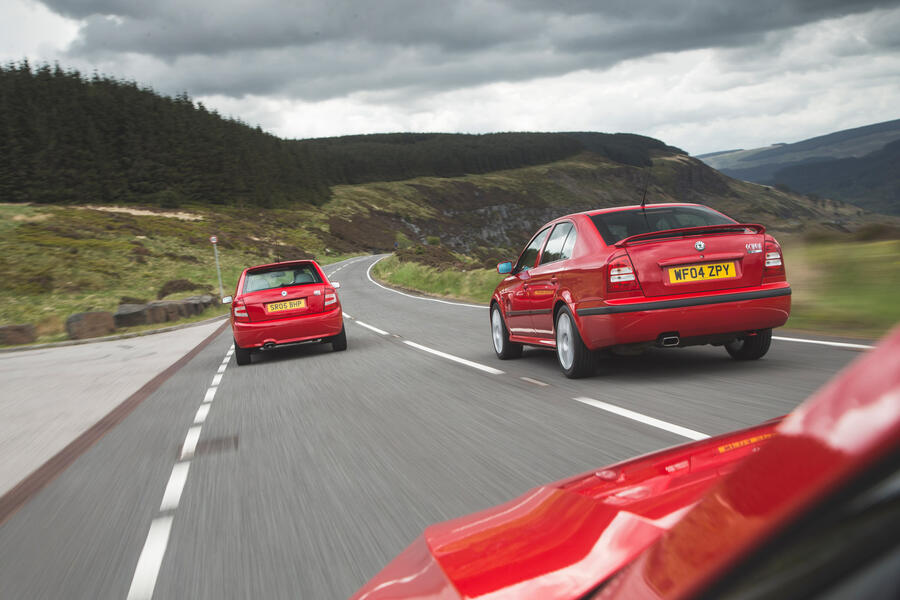
When it was launched in 1996 underpinned by the same platform as the first Audi A3, Seat Leon and Mk4 VW Golf, the Octavia was the first all-new model to be developed using the deep pockets and R&D resources of its new custodians in Wolfsburg. It was only a matter of time before the managers at Mladá Boleslav raided the VW parts bin for some choice options, not least the Audi-sourced turbocharged 1.8-litre four-cylinder engine complete with its novel five-valve-per-cylinder head and 178bhp power output that, at the time, made it one of the feistier fast family chariots. (The Volkswagen Golf could muster only 148bhp.)
It’s easy to see the link between old and new Octavia vRS, each with the same ‘is it a saloon or hatch?’ profile that marks it out from the usual hot hatch crowd. There’s a tailgate spoiler and deeper front bumper plus a neat oval exhaust, and the lowered and stiffened suspension allows the 17in alloy wheels to nicely fill out the standard yet subtly flared wheel arches. Like its equally discreet descendent, this older road-burner favours introversion over in-yer-face.
The low-key approach is emphasised by that turbocharged engine, which fires into life with no more aural drama than an entry-level model. This car comes from a time before theatrical switchable sports exhausts or the grating digitally augmented sound that’s played through the speakers of the new car. (Switching to Comfort makes things easier on your ears here.)
By current standards, the view out is panoramic, the thin pillars and low dashboard giving a sense of light and space that the roomier new car can’t match. There are few distractions, too, with just a single-DIN hi-fi, climate controls and a transmission-tunnel-mounted pop-out cupholder that’s brilliant in its simplicity.
At first, the performance feels brisk rather than ’bahn-storming, but the smooth-spinning motor’s linear delivery and soft voice actually disguise a surprising turn of pace, one that often has you looking down at the speedo and wondering how you got there quite so quickly. (When new, it was the fastest Skoda yet produced, topping out at 144mph.) It’s not a special unit, like a Honda VTEC, but its deep-chested muscle and undemonstrative character make for effortless point-to-point pace.
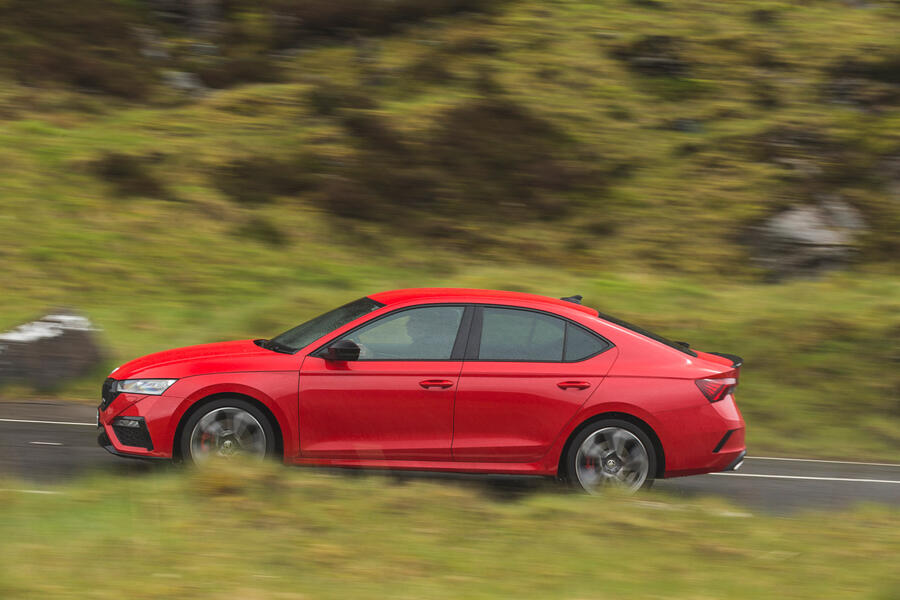
It’s a similar story with the chassis, which at first feels a little soft and lifeless. Despite firmer springs and dampers, the Octavia rides with the same suppleness as the current car when in the softest of its adaptive damper settings. Slow steering harks back to a time before torque vectoring, gumball tyres and hyper-alert ESP systems that are able to smoothly tame the nervousness of modern quick racks that encourage destabilising wrist-flick direction changes. Yet although the Octavia turns in lazily, the steering is well weighted and precise. Better still, when you start putting some load through the suspension, the vRS comes alive, gripping hard and delivering a balance and composure that belies the 79,000 miles that have passed under the wheels of this immaculately kept Skoda heritage fleet example.
It’s not involving in a way the Peugeot 306 GTi-6 or Ford Focus ST170 were, but there’s more than enough to and fro between car and driver to keep you engaged. It also knocks those contemporary rivals into the weeds for versatility and user-friendliness, with its space (there’s a 528-litre boot, plus the option of an even roomier estate) and decent refinement making it a grown-up daily driver that’s as comfortable with family life as with a flat-out blast.
Crucially, the Octavia cost £15,100 when new, undercutting the less powerful and less practical yet mechanically virtually identical Golf GTI by a good couple of grand, and it’s this melding of penny-pinching price, back-road bravura and easy-going everyday mien that’s at the very core of Skoda’s vRS appeal – and nowhere is this better demonstrated than by one of the firm’s most fondly remembered cars: the Mk1 Fabia vRS.
Of course, a few manufacturers had put a toe in the warmed-over diesel hatchback waters by the time the Fabia vRS made its debut in 2003, but Skoda was the first to jump in with both feet. While others added asthmatic oil-burners as a low-insurance, high-efficiency entry route to their more potent petrol-powered pocket rocket ranges, the derv-drinking vRS was the main event: if you wanted a fast Fabia, then it was Dr Diesel’s engine or nothing. Still, at a smidgen over £12,000 when new, the vRS undercut almost every petrol rival. The headline figure from its tried and tested VW Pumpe Düse 1.9-litre was 128bhp, which put it some way behind the contemporary Renault Clio RS or Ford Fiesta ST, but with 229lb ft of torque at just 1900rpm, it would happily tow both of its rivals without breaking a sweat. To put that figure in context, at the time, the Porsche Boxster S could muster no more twist from its mid-mounted 3.2-litre motor.
Turn the key, however, and all comparisons with a flat six from Zuffenhausen are immediately drowned out by the taxi-rank clatter of that direct-injection diesel engine. But get moving and, curiously, you actually start to enjoy the throbbing, grumbling backbeat, its unapologetically gruff mechanical machinations giving the Fabia a charm all of its own.
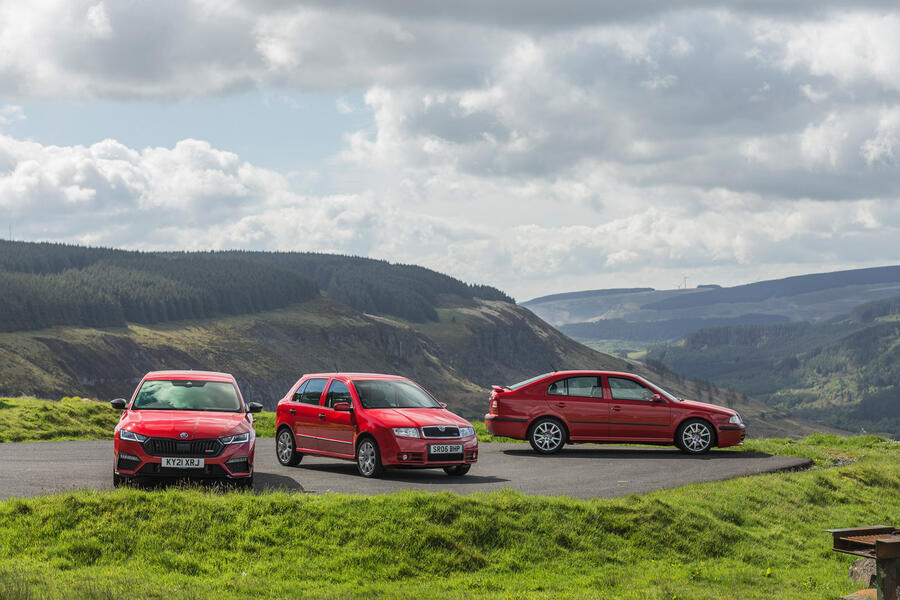
You don’t drive this vRS like a normal hot hatch, grabbing it by the scruff of its neck and wringing every last rev out of its engine. Instead, you conduct it more like a mini-GT, riding that rippling band of mid-range torque, short-shifting up through the precise six-speed manual so you can experience that addictive surge of low-rev elasticity all over again.
As with the Octavia, the Fabia isn’t a scalpel-sharp, synapse-snapping machine (its steering is too slow and mute, its balance geared towards safety-first front-end push) but it can be hustled hard. Its on-limit composure and compact dimensions combine with the engine’s haymaker punch to enable incredibly swift progress across the ground.
True to vRS form, where the Fabia really scores over its old rivals is its ability to slip seamlessly into daily life. Its light and airy cabin has more space than most and the flexibility of five doors, while its long-striding sixth gear gives it long-haul credentials. Factor in an easy 40mpg, even when going hard, and it’s easy to see how this became a cult car – and why its petrol-engined, DSG-equipped replacement never quite snared affections in the same way.
Climb behind the wheel of the box-fresh Octavia vRS that has been shadowing our heritage cars all day and you can instantly feel that it’s shot through with the same DNA as the originals. Yes, it’s wall-to-wall touchscreens and TFT displays inside, and the combination of its 242bhp 2.0-litre turbocharged petrol engine, tenacious grip and trick limited-slip diff leaves the old cars gasping to keep up, but the same character traits of performance and practicality (no compact family hatch is more accommodating) are present and correct.
Like its ancestors, it needs to be driven hard to awaken its sporting side. At anything less than eighttenths, it feels little different from an Octavia SE, which makes it a doddle to live with when you just want to ‘get there’, but push through the initial aloofness and you’ll discover an agile and entertaining hatch that can run very hard indeed. In the real world, you’ll rarely need to go faster. Oh, and at £30,620, it’ll save you £3000 over the price of a smaller but otherwise identical Golf GTI.
It’s this unique Swiss army knife approach that has served vRS models so well over the past two decades. While rivals have become ever more focused on driver thrills at the expense of day-in and day-out habitability, Skoda has stuck to its guns in providing quick and capable cars that won’t break the bank, are usefully discreet and can turn their wheels to almost anything.
Twenty years on, its vRS brand remains as popular and relevant as ever, and the only laughs are from owners who have cottoned on to one of the most affordable and adaptable fast family cars out there.
Skoda Rapid 136 Coupe: vRS Precursor
‘What handles like a Porsche, costs just £4200 and is more fun than a GTI?’ As attention-grabbing headlines go, the one for our 1988 road test of the Skoda Rapid 136 Coupé takes some beating. Launched just over a decade before the first vRS made its debut (and a couple of years before VW came to the brand’s financial rescue), this rear-engined relic of communist-era Czechoslovakia is four-wheeled proof that the engineering minds at Mladá Boleslav already knew what it took to have fun behind the wheel.
More than 30 years after our original verdict, it’s hard to believe that Skoda’s 1991 dark blue 135 RiC (the last of the line, with single-point fuel injection and a catalyst) is in any way related to our red vRS triplets. It’s a stark example of the pace of change that has happened at the brand since VW took the reins. The contrast is brought into even sharper relief when you get moving.
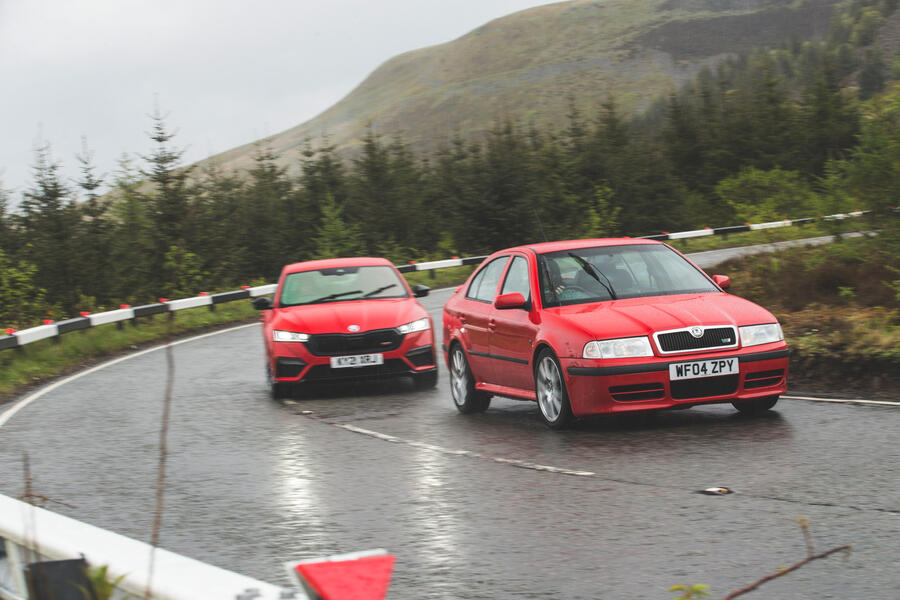
With just 54bhp, performance from the all-aluminium 1.3-litre four-pot is sluggish and it’s further hampered by a five-speed gearbox with a shift action that’s as imprecise as a three-year-old playing pin the tail on the donkey. However, get some speed up and you can start to revel in a chassis that really does live up to the headlines.
For starters, those contemporary 911 comparisons are spot on. The nose bobs along in rhythm with the road in the same way and you can use the pendulous weight of that out-rigger engine to your advantage. A quick lift of the throttle loosens the grip of the skinny 155-section rear tyres for a tighter cornering line – although, thanks to its trailing-arm rear suspension, it never gets wayward, unlike the vicious actions of its swing-axled forebears.
And despite an elevated ride height that suggests off-roading is the order of the day, the Rapid’s suspension is actually firm and controlled. It delivers a composed ride and a low-roll cornering stance, and with no corrupting power going through the front wheels, the steering is light, accurate and feelsome. In fact, it’s not long before you’re grinning like a loon at the sheer, simple fun of it all. It really is as entertaining as a GTI.
READ MORE
New Skoda Enyaq iV on sale in UK at £31,085
New 2021 Skoda Fabia revealed: major upgrades for value supermini

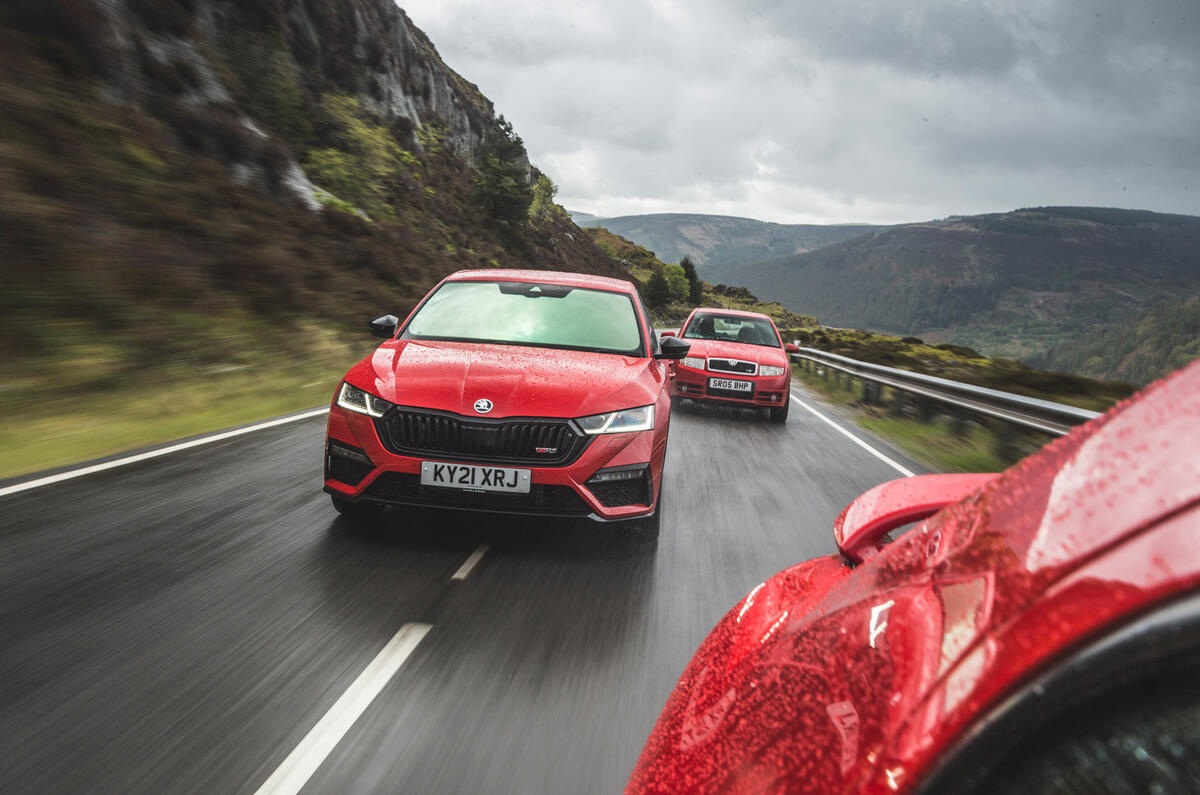
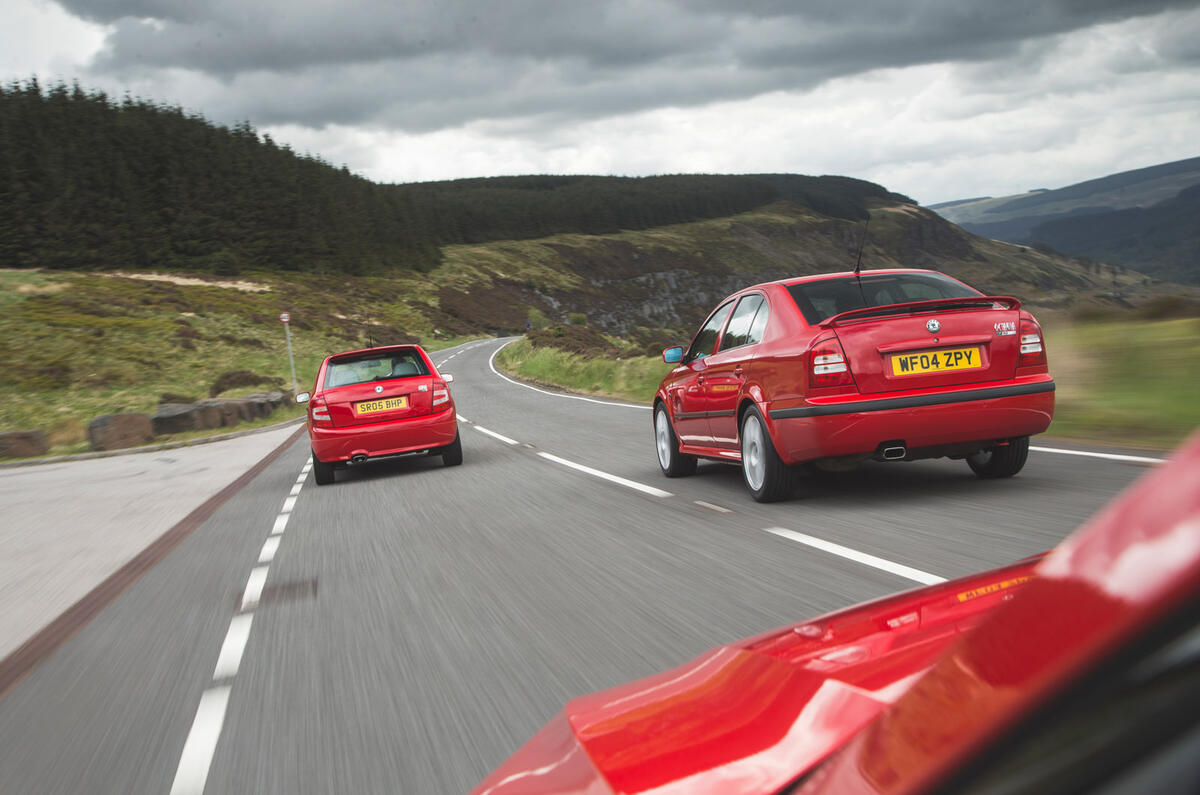
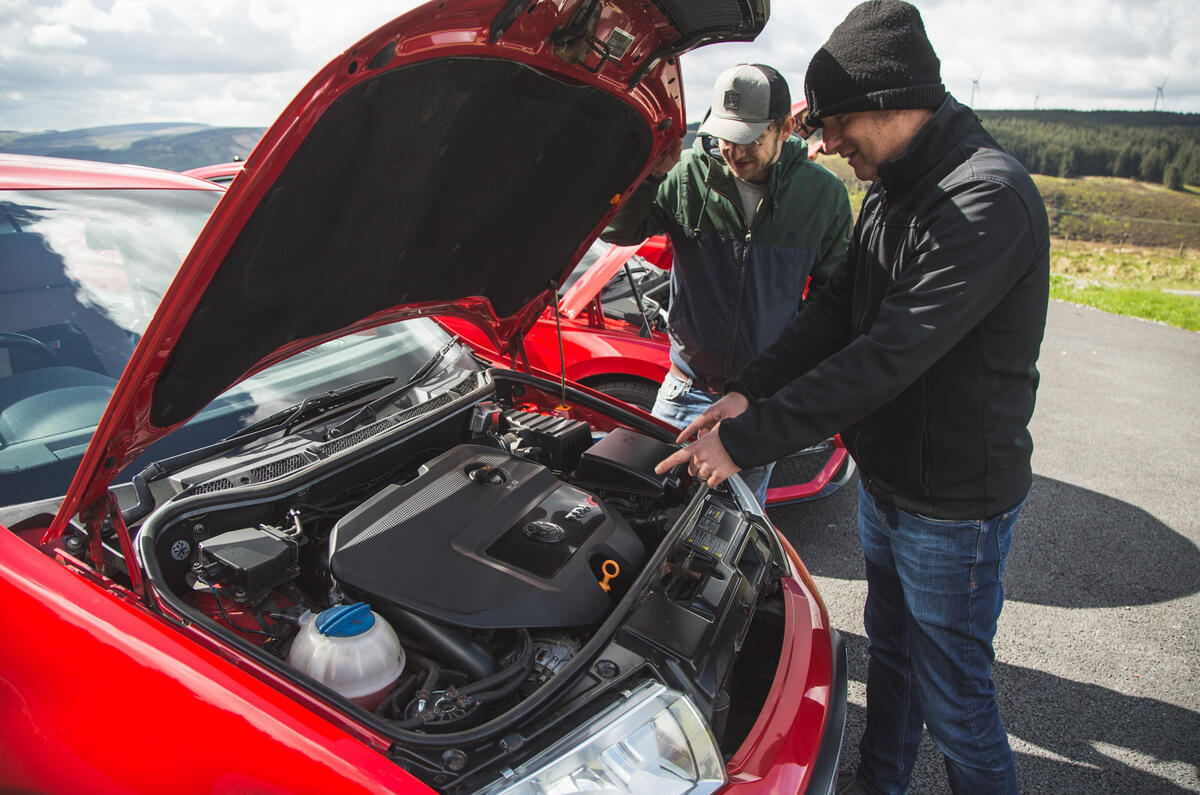
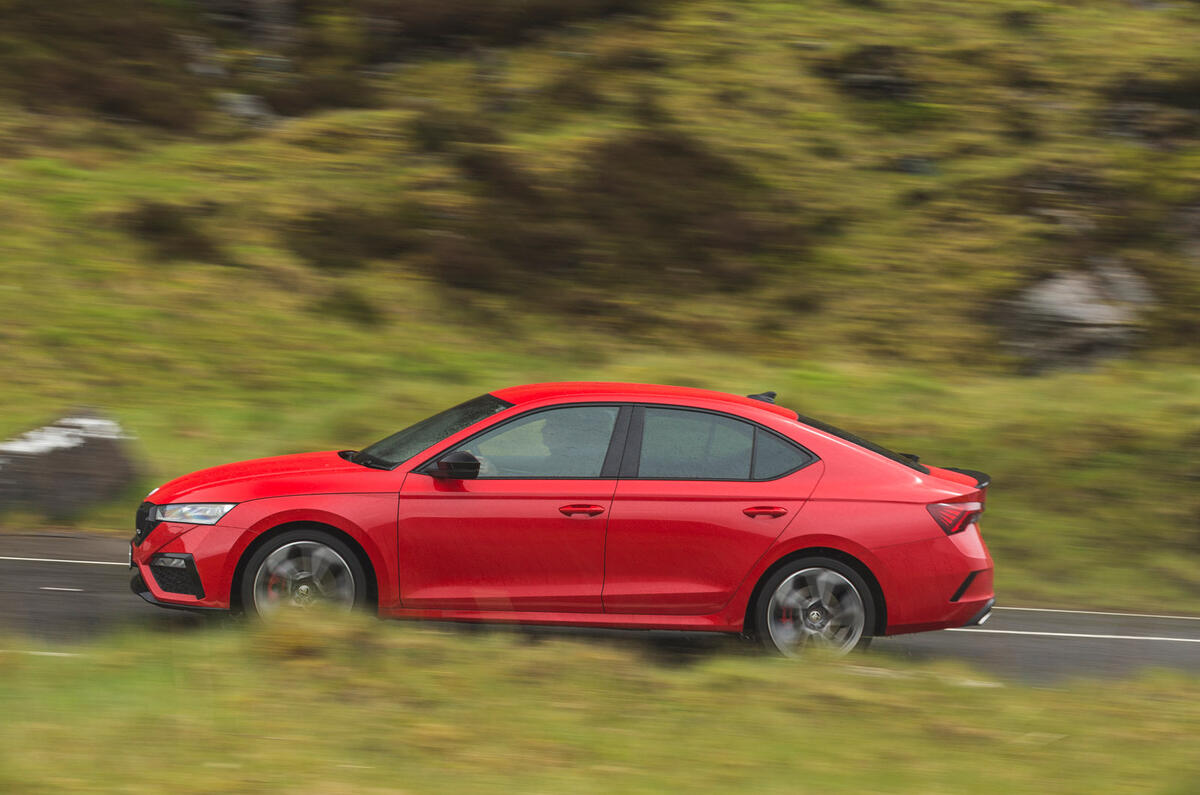
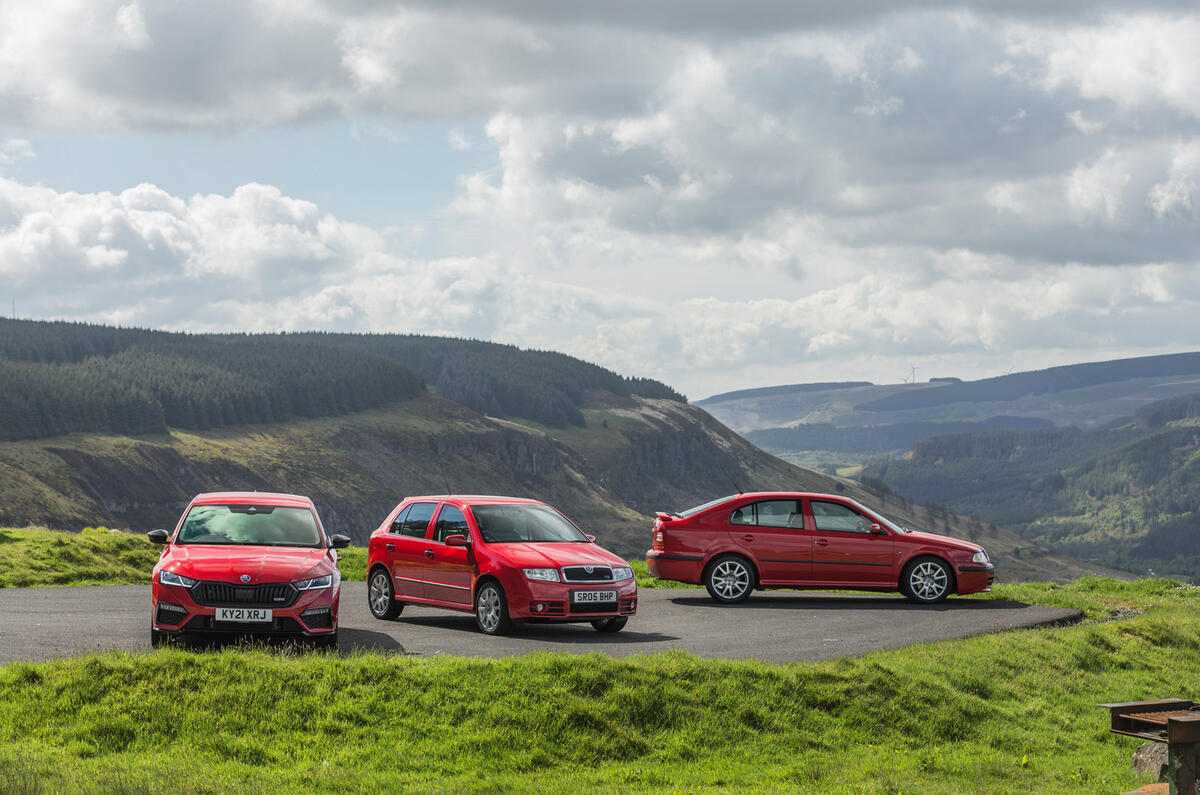
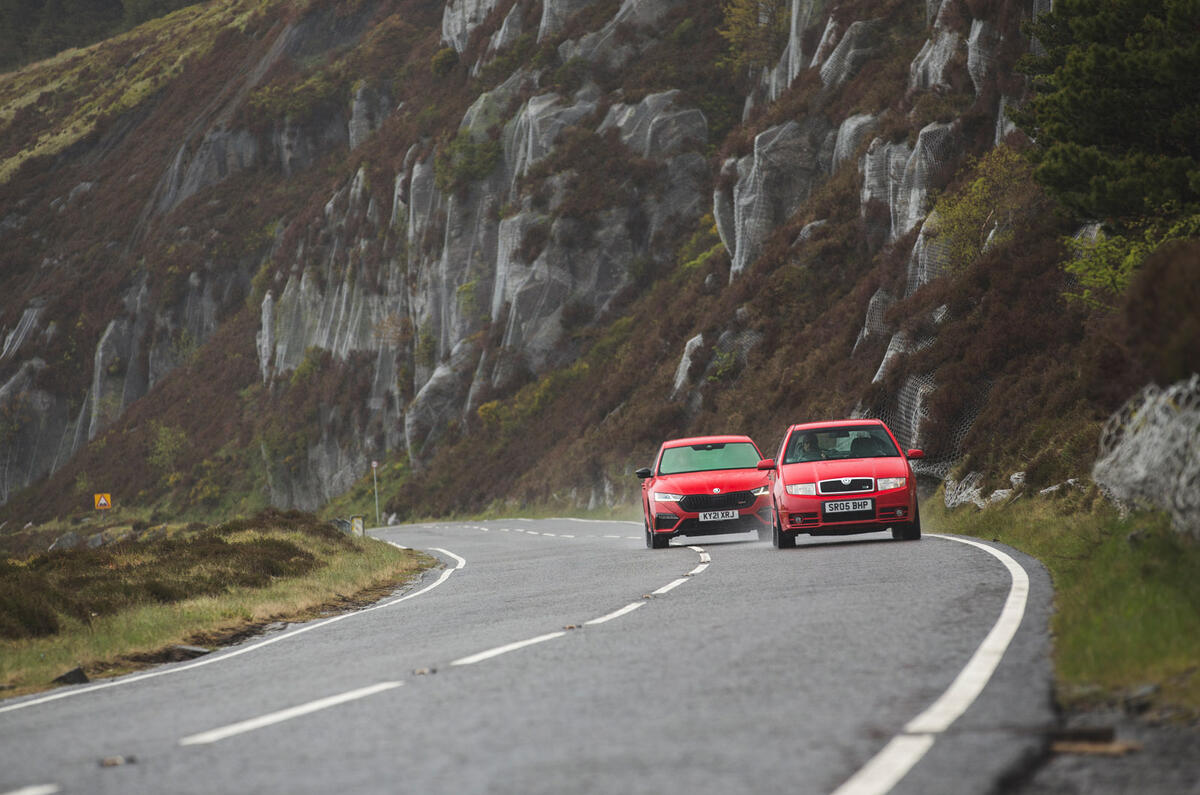
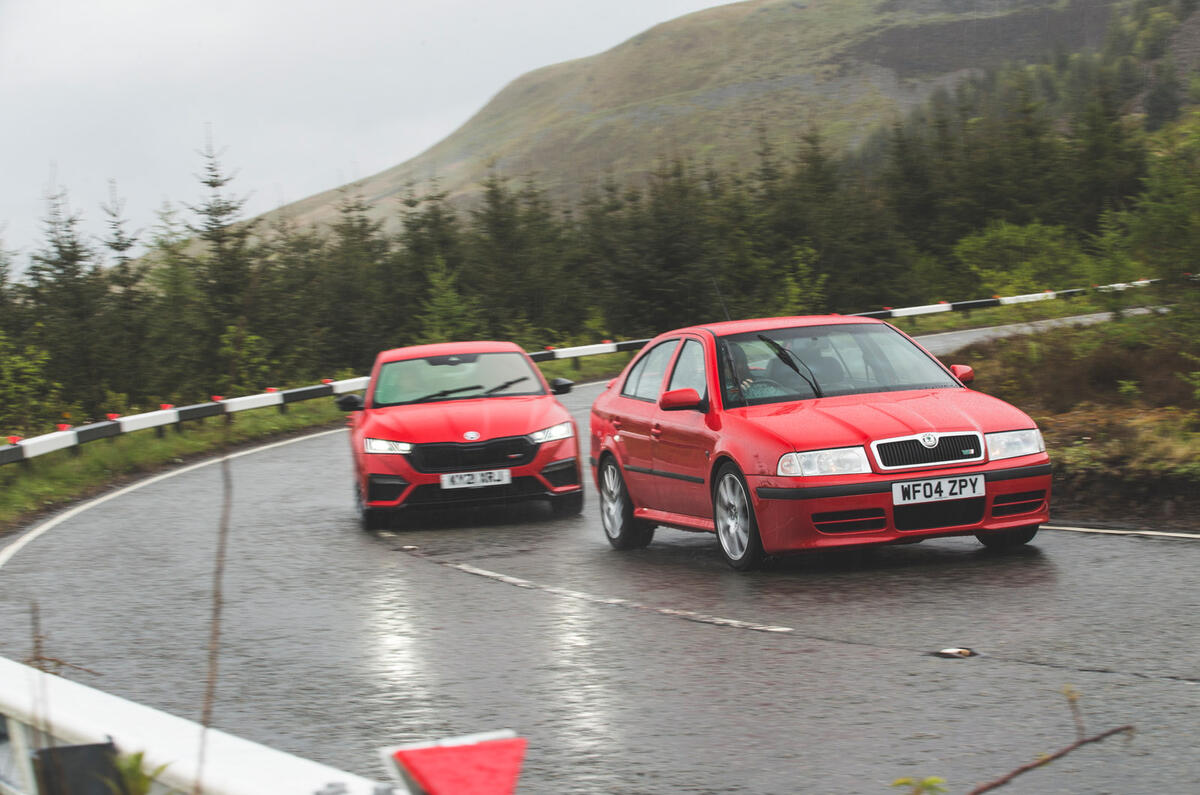
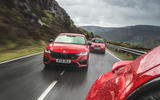

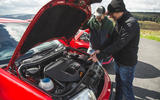
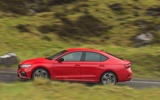
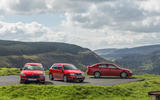
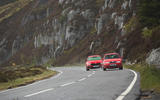
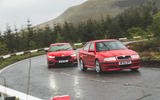

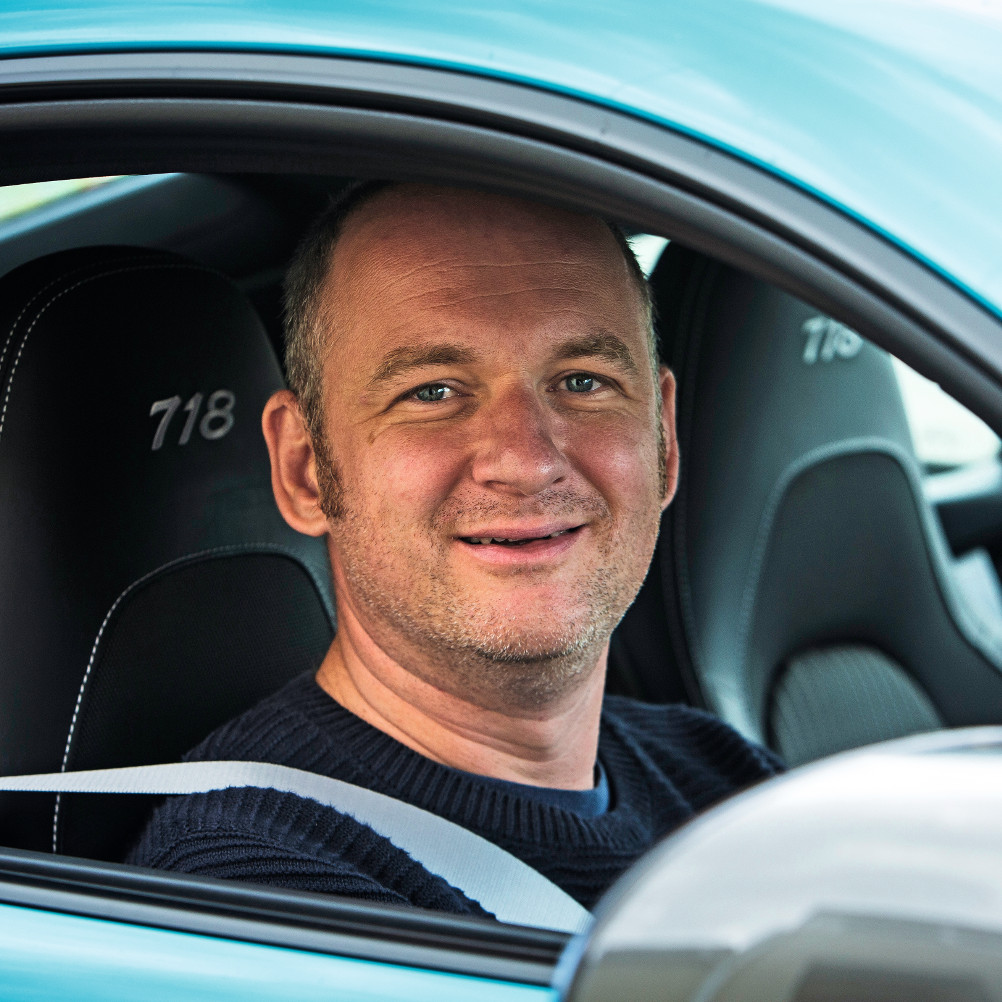



Join the debate
Add your comment
What utter nonsense from a person who clearly hasn't driven a Škoda or is frightened that his badge snobbery is under attack.
What utter nonsense from a person who clearly hasn't driven a Škoda or is frightened that his badge snobbery is under attack.
I'm on my 3rd Skoda and none of them have had a problem. Have owned a few VWs, and Audi and a SEAT and I'd argue that today's Skodas are the pick of the VW Group. I could have bought an Audi this time round but chose a Skoda as it was a better overall car.
I'd take issue with something in the report tho. In recent years, one in five Skodas sold have worn this three-lettered performance badge of honour. Are we sure about that? It may have been one if five Octavias one stage but surely not 1 in 5 Skodas?
They stopped the vRS Fabia around 2014 and the vRS Kodiaq was short lived, especially in the UK due to it's poor marketing. I'm scratching my head to think what anyone would have chosen the vRS over the Sportline. Kamiq, Karoq, Superb all sell in decent numbers but there are no vRS variants. 1 in 5 Skodas sold is a vRS? I just don't believe it. Even the new Octavia - I see plenty of them around, but few of them are vRS.